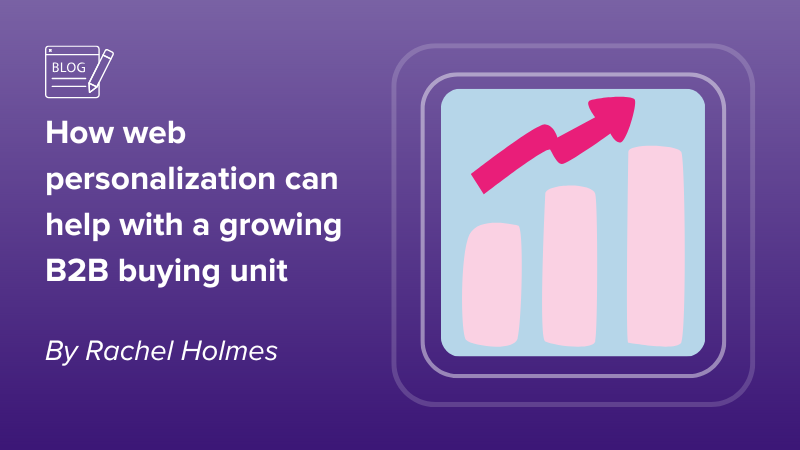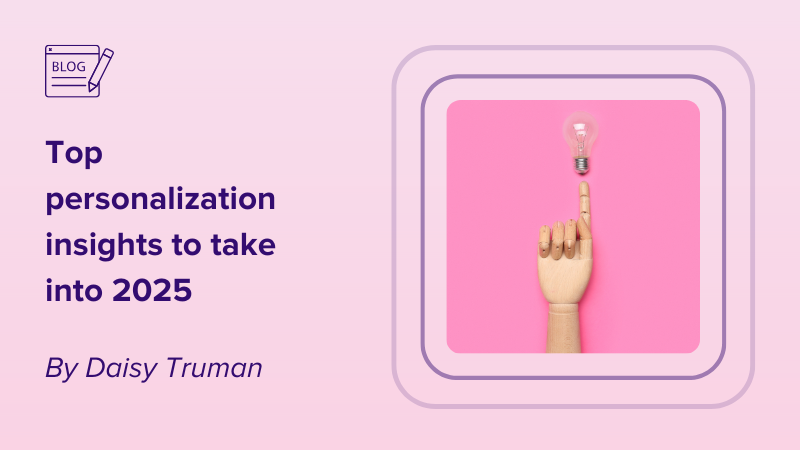Heading into the final quarter of the year, I can no longer keep this secret from the HR and Talent Software sector. At a time when the demand is greater than ever in your space and it’s becoming increasingly crowded, there’s a way to get an edge over your competitors. A way to increase the number of leads and conversions you’re delivering. And no, it’s not by driving more traffic.
I’m sure like many businesses in your space, you too are experiencing the side effects of the ever-increasing complexity of the B2B buying cycle. With up to 70% of research being completed online and even more decision-makers and influencers being brought in to help make purchase decisions, it’s harder than ever to get the right content in front of the right people on your website. Let alone get them to convert.
This is why as a community of B2B marketers, we’ve become so accepting that just 1% of website traffic converts. But when you consider all the blood, sweat, and tears, not to mention the budget that goes into driving traffic to your website, it’s time we started to question why we’re ok with just 1%.
Why is conversion so low?
I know as well as you do, that the visitors coming to your website are not there for the fun of it. HR and Talent software is of course an interesting topic, but not so entertaining that hordes of people will check out your website as a fun way to pass their time. Nope, they are looking at your website because they have a need for your services. The issue is, can they find the information they are looking for?
I understand that one of the biggest challenges in your space, is you typically serve a wide range of sectors. And now there’s a growing requirement to create content for many different influencers and decision makers too (Forbes say there are now between 6 – 10 decision makers in every B2B purchase). This makes it harder than ever to present the best message for each persona and industry on your website. You need to be everything to everyone.
And the likelihood is you’ve created lots of fantastic content for each of these sectors and personas you serve, but when it’s neatly tucked away in your navigation menu and people must hunt around for it, they quickly lose interest and move on to the next website.
With all that considered, it’s really no wonder that just 1% of your web traffic is converting… We’ve all become so accustomed in a B2C world to being served the most relevant information and fast. If we don’t have this material at our fingertips in an instant, we tend to bounce off one website and go somewhere else to find this intel. We’ve become impatient. So how can you keep all these personas with different needs happy and get them to interact with you?
The CRO secret
The good news is businesses just like you have already found a solution. Instead of driving more traffic to their website to achieve growing lead generation targets, they are addressing the millions of pounds in wasted spend and getting more bang for their buck. They are challenging the statistics; that on average 99% of website visitors just won’t convert. And so can you.
Turning your attention to Conversion Rate Optimization (CRO) enables you to focus on the wastage of unconverted traffic and address the fact that a ‘one size fits all’ approach to your website, no longer drives enough leads into your business.
The smartest marketers in your space have already adopted CRO to strike a balance between the volume and quality of leads. These businesses are collaborating across multiple business units to not only agree on what a good web lead looks like, but to also define their Ideal Customer Profile (ICP).
This allows them to focus their website on prioritizing:
- ICP’s for demand generation
- nurturing pipeline
- retention and cross sell of existing customers
by dynamically presenting the right content, at the right time, to the right person.
CRO is a hot topic right now that’s shaking up how the HR and Talent Software sector adopt technology, focused on increasing website conversion rates. Be part of the movement; you don’t be left behind wondering why you’re still stuck with a website conversion rate of just 1%.





